Top 250 Movies Like Empire Builders
A list of the best movies similar to Empire Builders. If you liked Empire Builders then you may also like: One Night with the King, The 300 Spartans, The Universal Language, Nero, The Rape of Europa and many more great movies featured on this list.
Throughout the centuries great empires have been erected, whose creators have governed nations, regions and continents for hundreds and even thousands of years. From the great civilizations of antiquity to the first world powers of our days, this series reviews the legacy left to us by the great empires that have written the history of humanity. Combining computer-generated images with dramatic reconstructions, experts and historians analyze the role these civilizations have played and how their heritage has survived to this day.
Empire Builders
The 300 Spartans
Essentially true story of how Spartan king Leonidas led an extremely small army of Greek Soldiers (300 of his personal body guards from Sparta) to hold off an invading Persian army now thought to have numbered 250,000.
The Universal Language
The Universal Language is a new documentary from Academy Award-nominated director Sam Green (The Weather Underground). This 30-minute film traces the history of Esperanto, an artificial language that was created in the late 1800s by a Polish eye doctor who believed that if everyone in the world spoke a common tongue, humanity could overcome racism and war. Fittingly, the word “Esperanto” means “one who hopes.” During the early 20th century, hundreds of thousands of people around the world spoke Esperanto and believed in its ideals. Today, surprisingly, a vibrant Esperanto movement still exists. In this first-ever documentary about Esperanto, Green creates a portrait of the language and those who speak it today that is at once humorous, poignant, stirring, and ultimately hopeful.
Nero
As a young boy, future emperor Nero witnesses the mad Emperor Caligula kill his father and exile his mother. While in exile in the pontine islands, Agrippina, his mother, sees a vision telling her that her son can become emperor, but she will have to die first. She accepts the proposal. Back in Rome, Nero, now being raised by emperor Claudius after Caligula's death, Agrippina returns. She poisons Claudius' food and Nero becomes emperor. At first, Nero cuts taxes and introduces successful programs and invades Brittania. Soon he meets a beautiful slave named Claudia Acte, and marries her, throwing off his engagement with Claudius' daughter, Claudia Octavia, telling her she can marry someone she will be happy with. Heartbroken, she arrives at an island and kills herself. Nero enjoys being married to Claudia Acte, but soon he gradually goes mad with power and sets fire to Rome.
The Rape of Europa
World War II was not just the most destructive conflict in humanity, it was also the greatest theft in history: lives, families, communities, property, culture and heritage were all stolen. The story of Nazi Germany's plundering of Europe's great works of art during World War II and Allied efforts to minimize the damage.
The Fight for Rome
A Roman noble, Cethegus, tries to start a war, setting the Ostrogoths and their Queen, Amalasuntha, against the Byzantine Emperor Justinian; Cethegus wants to swoop in after they have destroyed each other and create a new Roman Empire from their combined kingdoms; however, he does not factor into his plans the vagaries of love and the personal integrity of the people in both kingdoms.
Karama Has No Walls
'Karama has no walls' is set amidst Yemen's 2011 uprising. The film illustrates the nature of the Yemeni revolution in stark contrast to the gross violations of human rights that took place on Friday, March 18th 2011. Juma'at El-Karama (Friday of Dignity) marks a turning point in the Yemeni revolution as the tragic events that took place on this day -when pro-government snipers shot dead 53 protestors - shook the nation and propelled hundreds of thousands more to flock to the square in solidarity with their fellow citizens. Through the lenses of two cameramen and the accounts of two fathers, the film retells the story of the people behind the statistics and news reports, encapsulating the tragic events of the day as they unfolded.
The Keeper: The Legend of Omar Khayyam
Kamran is a 12 year old boy in the present day who discovers that his ancestor is the 11th Century Mathematician, Astronomer, Poet of Persia, Omar Khayyam. The story has been passed down in his family from one generation to another, and now it is his responsibility to keep the story alive for future generations. The film takes us from the modern day to the epic past where the relationship between Omar Khayyam, Hassan Sabbah (the original creator of the sect of Assassins) and their mutual love for a beautiful woman separate them from their eternal bond of friendship. Filmed almost entirely on location in Samarkand and Bukhara, Uzbekistan.
Apocalypto
Set in the Mayan civilization, when a man's idyllic presence is brutally disrupted by a violent invading force, he is taken on a perilous journey to a world ruled by fear and oppression where a harrowing end awaits him. Through a twist of fate and spurred by the power of his love for his woman and his family he will make a desperate break to return home and to ultimately save his way of life.
Atlantis: The Lost Empire
The world's most highly qualified crew of archaeologists and explorers is led by historian Milo Thatch as they board the incredible 1,000-foot submarine Ulysses and head deep into the mysteries of the sea. The underwater expedition takes an unexpected turn when the team's mission must switch from exploring Atlantis to protecting it.
Beasts of No Nation
Based on the experiences of Agu, a child fighting in the civil war of an unnamed, fictional West African country. Follows Agu's journey as he's forced to join a group of soldiers. While he fears his commander and many of the men around him, his fledgling childhood has been brutally shattered by the war raging through his country, and he is at first torn between conflicting revulsion and fascination.
Shooting Dogs
Two westerners, a priest and a teacher find themselves in the middle of the Rwandan genocide and face a moral dilemna. Do they place themselves in danger and protect the refugees, or escape the country with their lives? Based on a true story.
The Birth of a Nation
Two families, abolitionist Northerners the Stonemans and Southern landowners the Camerons, intertwine. When Confederate colonel Ben Cameron is captured in battle, nurse Elsie Stoneman petitions for his pardon. In Reconstruction-era South Carolina, Cameron founds the Ku Klux Klan, battling Elsie's congressman father and his African-American protégé, Silas Lynch.
Troy
In year 1250 B.C. during the late Bronze age, two emerging nations begin to clash. Paris, the Trojan prince, convinces Helen, Queen of Sparta, to leave her husband Menelaus, and sail with him back to Troy. After Menelaus finds out that his wife was taken by the Trojans, he asks his brother Agamemnon to help him get her back. Agamemnon sees this as an opportunity for power. They set off with 1,000 ships holding 50,000 Greeks to Troy.
Independence Day: Resurgence
We always knew they were coming back. Using recovered alien technology, the nations of Earth have collaborated on an immense defense program to protect the planet. But nothing can prepare us for the aliens’ advanced and unprecedented force. Only the ingenuity of a few brave men and women can bring our world back from the brink of extinction.
The Royal Hunt of the Sun
The Spanish explorer Pizarro captures the Inca god-chief Atahualpa and promises to free him upon the delivery of a hoard of gold. But Pizarro finds himself torn between his desire for conquest and his sense of honor after friendship and respect develops between captive and captor.
The Story of Mankind
The devil and the spirit of mankind argue as to whether or not humanity is ultimately good or evil.
The Last Legion
As the Roman empire crumbles, young Romulus Augustus flees the city and embarks on a perilous voyage to Britain to track down a legion of supporters.
The Fall of the Roman Empire
In the year 180 A.D. Germanic tribes are about to invade the Roman empire from the north. In the midst of this crisis ailing emperor Marcus Aurelius has to make a decission about his successor between his son Commodus, who is obsessed by power, and the loyal general Gaius Livius.
History of the World: Part I
An uproarious version of history that proves nothing is sacred – not even the Roman Empire, the French Revolution and the Spanish Inquisition.
Surviving Progress
Humanity’s ascent is often measured by the speed of progress. But what if progress is actually spiraling us downwards, towards collapse? Ronald Wright, whose best-seller, “A Short History Of Progress” inspired “Surviving Progress”, shows how past civilizations were destroyed by “progress traps”—alluring technologies and belief systems that serve immediate needs, but ransom the future. As pressure on the world’s resources accelerates and financial elites bankrupt nations, can our globally-entwined civilization escape a final, catastrophic progress trap? With potent images and illuminating insights from thinkers who have probed our genes, our brains, and our social behaviour, this requiem to progress-as-usual also poses a challenge: to prove that making apes smarter isn’t an evolutionary dead-end.
Aurora's Sunrise
The story of how Aurora Mardiganian (1901-94), a survivor of the Armenian genocide perpetrated by the Ottoman Empire (1915-17), became a Hollywood silent film star.
Sunshine
The story of a Jewish family living in Hungary—through three generations—rising from humble beginnings to positions of wealth and power in the crumbling Austro-Hungarian Empire. The patriarch becomes a prominent judge but is torn when his government sanctions anti-Jewish persecutions. His son converts to Christianity to advance his career as a champion fencer and Olympic hero, but is caught up in the Holocaust. Finally, the grandson, after surviving war, revolution, loss and betrayal, realizes that his ultimate allegiance must be to himself and his heritage.
Vlad's Legacy
Filmmaker John Gillespie and his crew travel to Turkey to document the legend of Vlad The Impaler, only to find themselves caught up in a centuries old conspiracy in a village nestled on the outskirts of Istanbul.
Hannibal: Rome's Worst Nightmare
It is 200 years before the birth of Christ and Rome is the new superpower of the ancient world. She believes she is invincible - but one man is destined to change that. He is a man bound by oath to avenge the wrongs inflicted on his home and, in pursuit of revenge, he will stop at nothing. Hannibal explores the man behind the myth, revealing what drove the 26-year-old to mastermind one of the most audacious military moves in history. With 40,000 soldiers and 37 elephants, he marched 1,500 miles to challenge his enemies on their own soil. It was an act so daring that few people believed it possible.
Sometimes in April
Two brothers are divided by marriage and fate during the 100 horrifying days of the 1994 Rwandan genocide.
The Singing Revolution
Most people don't think about singing when they think about revolutions. But song was the weapon of choice when, between 1986 and 1991, Estonians sought to free themselves from decades of Soviet occupation. During those years, hundreds of thousands gathered in public to sing forbidden patriotic songs and to rally for independence. "The young people, without any political party, and without any politicians, just came together ... not only tens of thousands but hundreds of thousands ... to gather and to sing and to give this nation a new spirit," remarks Mart Laar, a Singing Revolution leader featured in the film and the first post-Soviet Prime Minister of Estonia. "This was the idea of the Singing Revolution." James Tusty and Maureen Castle Tusty's "The Singing Revolution" tells the moving story of how the Estonian people peacefully regained their freedom--and helped topple an empire along the way.
Being Napoleon
On June 18, 1815, several European armies, commanded by the British Duke of Wellington, faced for the last time the deposed French Emperor Napoleon Bonaparte in the fields of Belgium. Two hundred years later, thousands of people recreate the epic clash between two titans that history knows as the Battle of Waterloo.
The Image You Missed
An Irish filmmaker grapples with the legacy of his estranged father, the late documentarian Arthur MacCaig, through MacCaig's decades-spanning archive of the conflict in Northern Ireland. Drawing on over 30 years of unique and never-seen-before footage, 'The Image You Missed' is an experimental essay film that weaves together a history of the Northern Irish 'Troubles' with the story of a son's search for his father. In the process, the film creates a candid encounter between two filmmakers born into different political moments, revealing their contrasting experiences of Irish nationalism, the role of images in social struggle, and the competing claims of personal and political responsibility.
Apostle Peter and the Last Supper
The film portrays Saint Peter reflecting on his time with Jesus and his fellow Apostles during his final imprisonment in Rome. In particular, Peter attempts to convert one of his jailers, Martinian, by relating the life, teachings, and sacrifice of Jesus.
The Fall of '55
In late 1955 and early 1956, the citizens of Boise, Idaho believed there was a menace in their midst. On Halloween, investigators arrested three men on charges of having sex with teenage boys. The investigators claimed the arrests were just the tip of the iceberg-they said hundreds of boys were being abused as part of a child sex ring. There was no such ring, but the result was a widespread investigation which some people consider a witch hunt. By the time the investigation ended, 16 men were charged. Countless other lives were also touched.In some cases, men implicated fled the area. At least one actually left the country. The investigation attracted attention in newspapers across the nation, including Time Magazine. The "Morals Drive" left scars which remain to this day.
The Real George Washington
Founding father, commander of the Continental Army and America's first president—George Washington's face is as familiar as the dollar bill. Today, archaeologists, scientists and historians are applying innovative forensic techniques to reveal the man behind the myth. We join a team, funded by the National Geographic Society, that has discovered the ruins of George Washington's childhood home—its exact location had been a mystery until now. As they comb the site, they unearth two cellars and a collection of incredible artifacts that help set the record straight on his fabled youth.
The Phantom Empire
When the ancient continent of Mu sank beneath the ocean, some of its inhabitant survived in caverns beneath the sea. Cowboy singer Gene Autry stumbles upon the civilization, now buried beneath his own Radio Ranch. The Muranians have developed technology and weaponry such as television and ray guns. Their rich supply of radium draws unscrupulous speculators from the surface. The peaceful civilization of the Muranians is corrupted by the greed from above, and it becomes Autry's task to prevent all-out war, ideally without disrupting his regular radio show.
Flesh and Blood: The Hammer Heritage of Horror
Explore the most legendary horror studio of all time with this fascinating, frightening journey hosted by terror titans Christopher Lee and Peter Cushing. England's most successful independent film company, the "fear factory" of Hammer Studios, has a history filled with feuds, censorship battles and streaks of luck both good and bad. Now the legacy of horror returns, featuring interviews with such Hammer legends as Raquel Welch, Veronica Carlson, Caroline Munro, Ingrid Pitt, Jimmy Sangster, Hazel Court, Martine Beswicke, Freddie Francis, Val Guest and Ray Harryhausen. Plus you'll be treated to behind-the-scenes home movies and nonstop shock scenes from over 40 classic films, including Horror of Dracula, Curse of Frankenstein, The Devil Rides Out, Curse of the Werewolf and many more! It's the definitive study of one of the greatest names in horror!
Boudica
The Celtic queen who shook the Roman Empire. Boudica is one of history’s first and fiercest women warriors. Sickened by ceaseless war, the king of the Iceni accepts a treaty with the Romans in exchange for his tribe’s continued independence. But oppressively high taxes impoverish the tribe and soon the Romans want something more — slaves. Refusing to submit, the Romans, led by the greedy and psychotic Emperor Nero, move to crush the Iceni and control their lands. Drawing on the strength of her warriors, mystical druidic powers, and her own pain, Boudica unites the historically fractious tribes of Briton to unleash a stunning onslaught on the Roman colonial camps. The ferocity of Boudica’s attacks will shake the foundations of the Roman empire and make her a legend.
Life After People
In this special documentary that inspired a two-season television series, scientists and other experts speculate about what the Earth, animal life, and plant life might be like if, suddenly, humanity no longer existed, as well as the effect humanity's disappearance might have on the artificial aspects of civilization.
9/11: Phone Calls from the Towers
Trapped in The Twin Towers on September 11th, thousands of ordinary people struggled to make contact with the outside world. Many knew that time was ticking away. These recorded messages and private calls are the most powerful legacy to the families left behind. Often full of love and dignity they depict humanity at its best and most resourceful in the face of evil.
D-Day 6.6.1944
On June 6th, 1944 the largest military invasion and defence the world has ever seen occurred. D-Day tells the epic story of the preparation and execution of the Allied invasion of Normandy. It tells the story of the defence of the Western Front by the forces of the German Empire, and of the complex and deadly secret war fought by the men and women of France and mainland Europe. D-Day brings to life the dramatic and astounding tales of courage and sacrifice, joy and despair, love and betrayal. The planning for the Allied invasion on June 6th 1944 took two years and cost thousands of lives. It involved a deception of breathtaking audacity. Both the preparation leading up to and the actions and events on the day itself relied on the absolute discretion of many and the genius and nerve of a few. D-Day examines the intricate jigsaw from both sides - presenting events through the eyes of the men and women who were there, telling their extraordinary stories.
End
In the face of an apocalyptic world, father and daughter are forced to grapple with their relationship while facing a pandemic that threatens to eliminate humanity. While the world decays around them they seek shelter and protection within their own house. Civilization slowly slips away leaving them forsaken and isolated, until a group of survivors suddenly shows up on their doorstep seeking help and shelter. Bringing in the survivors forces them to unite and a power struggle ignites within the house as each individual attempts to cope with the tragedy enveloping them. Even in this test of preserving the human spirit, these nine individuals begin to learn what it takes to be human and live within a rapidly changing world.
Marco Polo: One Hundred Eyes
Before he lost his sight. Before he pledged his service to Kublai Khan. Hundred Eyes saw what made him into the deadly assassin who trains Marco Polo.
Amazons and Gladiators
During the Roman Empire, General Crassius ruled a small province with an Iron fist. Serena, a young girl in a village, watches Crassius kill her parents. Crassius and Serena's destiny would lead them to the Gladiator ring; the Amazons Warrior vs the Roman General.
Phi 1.618
In a dystopian future, a nation of bio-titans has been created and the female sex and procreation have become obsolete. As the Earth turns toxic, the bio-titans are eager to colonise the cosmos on board a colossal spaceship, taking with them only one female body kept barely alive as a reminder of the troubled past. But everything changes when the immortal calligrapher Krypton, tasked with creating an indestructible copy of the entire written heritage of his kin, sees a forbidden book turn into a feisty girl, Gargara.
Hudson's Bay
Highly fictionalized early history of Canada. Trapper/explorer Radisson imagines an empire around Hudson's Bay. He befriends the Indians, fights the French, and convinces King Charles II to sponsor an expedition of conquest.
Isenhart: The Hunt Is on for Your Soul
In the middle of century XII much of the European territory is ruled by the Holy Roman Empire and violence and cruelty are the order of the day. Several German regions are terrorized by a dangerous murderer who is dedicated to kill young girls. Therefore, Isanhart and Laurin, his faithful companion in arms, will travel from end to end of the old continent to hunt the ruthless criminal.
Golda
Set during the tense 19 days of the Yom Kippur War in 1973, Israeli Prime Minister Golda Meir is faced with the potential of Israel’s complete destruction. She must navigate overwhelming odds, a skeptical cabinet and a complex relationship with US Secretary of State Henry Kissinger, with millions of lives in the balance. Her tough leadership and compassion would ultimately decide the fate of her nation and leave her with a controversial legacy around the world.
Killing Jesus
Jesus of Nazareth’s life and ministry were subject to seismic social and political events that led to his execution and changed the world forever.
Genghis Khan
The programme is based on 'The Secret History of the Mongols', a manuscript written in the 13th century, some believe by the adopted son of the great Khan.
The Real Robin Hood
Was there really a Robin Hood? Did he steal from the rich and give to the poor? This History Channel program revisits the popular legend of the valiant folk hero, revealing Robin's true origins as a composite of multiple figures from the distant past, reviewing their amazing exploits, and seeking insights from historians as well as cast members of the 2010 adventure film "Robin Hood" and its director, Ridley Scott.
Julius Caesar Revealed
Mary Beard is on a mission to uncover the real Julius Caesar, and to challenge public perception, exploring Caesar's surprising legacy.
Stewart & Mitchum: The Two Faces of America
With his naïve air, his rangy and reassuring silhouette, James Stewart symbolizes success, someone who everybody wants to look like. Behind his legendary nonchalance, Robert Mitchum is the figure of the bad boy, the kind-hearted hooligan who anyone would like to have for accomplice. What is the legacy left by these two big myths of the Hollywood cinema and in which way they fed the American dream?
Marcus Garvey: Look for Me in the Whirlwind
Marcus Garvey: Look for me in the Whirlwind uses a wealth of archival film, photographs and documents to uncover the story of this Jamaican immigrant, who between 1916 and 1921 built the largest black mass movement in world history. It explores Garvey’s dramatic successes and failures before his fall into obscurity. Among the film’s most powerful sequences are interviews with people who were part of the Garvey movement decades ago. These interviews communicate the appeal of Garvey’s revolutionary ideas to a generation of African Americans, and reveal how he invested hundreds and thousands of black men and women with a newfound sense of pride.
First Person Singular: John Hope Franklin
Charles Kuralt takes an revealing look at the life and career of African-American historian John Hope Franklin in this profile of the Harvard-educated writer whose book From Slavery to Freedom spotlighted the role of blacks in building America. Though facing incredible obstacles, Franklin scaled the stone wall of racism to become a scholar and activist, helping Thurgood Marshall, Dr. Martin Luther King and others change a nation.
Adopted
For hundreds of years, Africa has existed in a state of despair. Famine, civil wars and rampant disease have left the continent without hope, but for the efforts of Western do-gooders. At first, they arrived with food, bibles and the magic of penicillin; more recently they have hosted rock concerts and sent plane loads of grain. And in the last decade of the 20th century they arrived and took babies home with them. First there was Angelina, then Madonna, and now...Pauly Shore! The film builds its comedy foundation on the international interest in Celebrity Adoptions, and the debate that surrounds these transactions on both sides of the Atlantic. Sometimes politically incorrect and never scared to tread on manicured toes.
Ordinary Men: The "Forgotten Holocaust"
The Nuremberg Einsatzgruppen trial of 1947/1948 is considered the largest murder trial in history against members of four death squads from the security police and SD (the security service of the SS). During World War II, six million Jews were murdered. Four million died in the extermination camps, but two million people were killed in systematic mass shootings. The perpetrators came face to face with their victims. They shot at men, women, children - day after day, obediently and assiduously, as if it were normal work. Tens of thousands of Germans belonged to the mobile commandos of the task forces and police battalions. Who were these men, how could they commit such murders? What did the few survivors tell, how were they able to escape the mass extinction and live on with the horrific experience? Based on written traditions, original documents, film footage and photos as well as expert statements, the documentary traces the path of one of these murder battalions.
Caligula with Mary Beard
What is true and what is false in the hideous stories spread about the controversial figure of the Roman emperor Gaius Julius Caesar Augustus Germanicus (12-41), nicknamed Caligula? Professor Mary Beard explains what is accurate and what is mythical in the historical accounts that portray him as an unbalanced despot. Was he a sadistic tyrant, as Roman historians have told, or perhaps the truth about him was manipulated because of political interests?
The Day Hitler Died
The story of Hitler’s final hours told by people who were there. This special features exclusive forgotten interviews, believed lost for 65 years, with members of Hitler’s inner circle who were trapped with him in his bunker as the Russians fought to take Berlin. These unique interviews from figures such as the leader of the Hitler Youth Artur Axmann and Hitler’s secretary Traudl Junge, have never before been seen outside Germany. Using rarely seen archive footage and dramatic reconstruction, this special tells the story of Adolf Hitler’s final days in his Berlin bunker.
Earth 2100
Experts say over the next hundred years the "perfect storm" of population growth, resource depletion and climate change could converge with catastrophic results. The scenarios in Earth 2100 are not a prediction of what will happen but rather a warning about what might happen.
The Bomb
Using masterfully restored footage from recently declassified images, The Bomb tells a powerful story of the most destructive invention in human history. From the earliest testing stages to its use as the ultimate chess piece in global politics, the program outlines how America developed the bomb, how it changed the world and how it continues to loom large in our lives. The show also includes interviews with prominent historians and government insiders, along with men and women who helped build the weapon piece by piece.
Hindenburg: Titanic of the Skies
The film explores the background and build-up to this final flight to disaster. Using dramatic reconstruction, archive footage and exclusive interviews with leading historians and engineering experts, the special delves into the political and scientific events that led up to the catastrophe.
Lee & Grant
Produced with the cooperation of leading Civil War historian Winston Groom, author of Forrest Gump, Lee & Grant is a personal look at two iconic leaders of the Civil War. Surprising details reveal the bold choices and almost godlike power Ulysses S. Grant and Robert E. Lee summoned on decisive battlefields like Vicksburg and Gettysburg that, within days of each other, turned the tide of the war.
Camp Century: The Hidden City Beneath the Ice
How in 1959, during the heat of the Cold War, the government of the United States decided to create a secret military base located in the far north of Greenland: Camp Century, almost a real town with roads and houses, a nuclear plant to provide power and silos to house missiles aimed at the Soviet Union.
Ottoman Empire: The War Machine
This History Channel documentary traces the Ottoman Empire from its beginnings in the 14th century to its incarnation as one of the largest empires in history, spanning three continents.
The Living Dream: 100 Years of Rocky Mountain National Park
The history of Rocky Mountain National Park is told with the help of historians, historical photographs and never before seen movie footage. Te begins with the Native American and Mountain Man eras through the pioneers. It continues through the 20th Century and into modern times. A group of individuals pooled their passions and dreams with those of naturalist Enos Mills. They persevered through opposition and antagonism while transforming an economy of mining and ranching to an economy of preservation and conservation. Legendary Everest climber Tom Hornbein and world-class climber, Tommy Caldwell share stories of Longs Peak and join others who pass on their legacies from this National Park.
Legacy of the Hollywood Blacklist
This one-hour film, narrated by Actor BURT LANCASTER, explores the lingering effects of The Hollywood Blacklist, which occurred in the late forties and early fifties as part of the Anti-Communist witch-hunts that terrorized the nation. This film is seen through the eyes of the wives and children of the now deceased Hollywood figures whose careers were destroyed when studio bosses, along with guild and union officials capitulated to the demands of the House Un-American Activities Committee.
Henry VIII's Enforcer: The Rise and Fall of Thomas Cromwell
Thomas Cromwell has gone down in history as one of the most corrupt and manipulative ruffians ever to hold power in England. A chief minister who used his position to smash the Roman Catholic church in England and loot the monasteries for his own gain. A man who used torture to bring about the execution of the woman who had once been his friend and supporter - Anne Boleyn. Diarmaid MacCulloch, professor of the history of the church at Oxford University, reveals a very different image of Cromwell. He describes Cromwell as an evangelical reformer, determined to break the hierarchy of the Roman Catholic church and introduce the people of England to a new type of Christianity in which each individual makes direct contact with God.
Pride and Prejudice: Having a Ball
In Pride And Prejudice: Having A Ball, social historian Amanda Vickery leads the action as a team of experts recreate a Regency ball in honour of the 200th anniversary of Jane Austen’s popular novel. Joined by Alastair Sooke and a coterie of professionals – a food historian, a costume expert, music history academics and a choreographer who trains a team of dance students to take to the floor– cameras will follow the recreation inspired by Austen’s Netherfield ball. This intimate country house ball drives the plot of the Pride And Prejudice, and is a key turning point in the romance between Elizabeth Bennett and Mr Darcy.
The Jewish-Roman Wars
In the first century, after the death of Herod the Great, Judea goes through a long period of turbulence due to the actions of the corrupt Roman governors and the internal struggles, both religious and political, between Jewish factions, events that soon lead to the uprising of the population and a cruel war that lasts several years and causes thousands of deaths, a catastrophe described in detail by the Romanized Jewish historian Titus Flavius Josephus.
The Truth Behind: Atlantis
This is a short documentary which examines a small selection of theories about Atlantis, and looks at a few archaeological sites as well. Uncover fascinating new information about the "lost" underwater city of Atlantis, a legend that has long mystified scholars and explorers.
Supervolcano: Yellowstone's Fury
For over a century, tens of millions of visitors have marveled at the natural beauty of Yellowstone National Park. But, beneath all this beauty lurks a beast. Yellowstone sits directly above one of the largest volcanic systems on Earth. For the past two million years, this supervolcano has erupted roughly every 600,000 years. The last major eruption occurred 640,000 years ago. So, is it overdue for another eruption? There have been disturbing signals... Supervolcano: Yellowstone's Fury examines the cataclysmic effect an eruption would have on the world. It would be the largest natural disaster in recorded history. NYU Earth Scientist Michael Rampino warns, "An eruption like Yellowstone could trigger the end of civilization as we know it." For experts, the question is not if there will be another eruption, but when. University of Toronto geologist John Westgate agrees: "There will be a very large-scale supervolcanic eruption from Yellowstone. That's a fact."
Lions Unleashed
In Rwanda, Africa, a new era is dawning after a brutal civil war ripped through the country, killing close to two million people and wiping out its most iconic wildlife: the regal lion. Now, 25 years later, the big cats are being reintroduced to the region to reclaim their throne. Follow this magnificent seven, a collection of five females and two males, as they travel thousands of miles from South Africa to Akagera National Park and attempt to figure out their new land, form relationships, and restore the pride of a nation.
The Secret Life of the Berlin Wall
Berlin is a place that is indispensable to the imagination, a city where history ticks all the boxes. The longest of all the helter-skelter rides that Berliners have taken through the playground of history ended in 1989 when the Berlin Wall shattered into a million souvenirs. Hundreds of people, mainly young, were killed there trying to escape to the West. The people who built the Wall thought they were building a brave new socialist world. But their dream turned into a nightmare as over time the Wall poisoned, corrupted and brutalized the little world it encircled. In The Secret Life of the Berlin Wall, the dreams and nightmares come dramatically back to life as the spies, informers, double agents and interrogators of Cold War Berlin weave their nervy spells of double lives and double dealing.
WWII in 3D
For the first time, you will see dramatic moments of WWII that were captured in 3D with stereographs and then shuttered away in secret archives and attics, until now. This stunning collection of color 3D photos includes Allied reconnaissance photos, a trove of images that documents the rise and fall of the Third Reich, and photos secretly taken by a civilian in occupied France. WWII IN 3D also features an actual 3D motion picture film shot by the Nazis in 1943 and creates a fully immersive, three dimensional portrait of history's largest and bloodiest conflict.
Truck Wars
Pickup trucks are essential to the American way of life; manufacturers compete to outsmart, outmaneuver and outlast each other; experts, designers and historians weigh in on the most influential innovations in the truck world over the past 120 years.
Reunification in the Ice: The Story of the Last GDR Antarctic Explorers
In 1989, thirteen GDR scientists and technicians set off from East Berlin to the Georg Forster research station in the Antarctic. During their expedition the Berlin Wall fell on November 9th. Cut off from the images that go around the world, the men can only experience the historical events passively. When they returned in the spring of 1991, their homeland was a foreign country. The documentary reconstructs the thoughts and feelings of the East German researchers on the basis of eyewitness accounts, diary excerpts, letters, film material, grandiose landscape shots from the location of the action and unique photos to make the consequences of the events tens of thousands of kilometers away on the small GDR expedition in the middle of the eternal ice tangible.
Lost Continent of the Pacific
Legends of lost continents and civilizations have captivated people throughout time. Philosophers and astronomers like Aristotle and Ptolemy believed that an unknown continent existed in the Southern hemisphere. In the Age of Discovery, renowned explorers like Magellan and Cook searched the Pacific Ocean in vain for a mysterious land they called "Terra Incognita." To this day, ancestral legends throughout Polynesia speak of a lost homeland and a great civilization that disappeared into the sea. Modern science disputes the existence of unknown continents and often dismisses creation myths. But on Rapa Nui, or Easter Island, elders fiercely believe they originate from a continent that sank following a catastrophic upheaval.
Fort Niagara: The Struggle For a Continent
For over 150 years, Fort Niagara protected the strategic point at the mouth of the Niagara River. Four nations struggled to conquer it, and thus control that critical water artery.
Going Medieval
In this two-hour H2 special, historian and weapons expert Mike Loades goes medieval diving deep into the world of the Middle Ages. From the 5th to the 15th centuries, Mike battles the realities vs. the myths of this extraordinary time crusading for the core of real life while delivering fun-filled facts. From living, working and fighting to how to keep a knight's armor shiny using a vigorous rub of sand, vinegar and urine, Going Medieval is an expert account of life during medieval times.
The Search for Alfred the Great
Neil Oliver is given exclusive access to a team of historians and scientists investigating the final resting place of Alfred the Great. Alfred's bones have been moved so many times over the centuries that many...
The Obama Years: The Power of Words
Barack Obama launched into our national consciousness at the 2004 Democratic National Convention and ever since, he's delivered messages of patriotism, unity, and hope through the power of words. But of all the speeches he's given, six in particular may define his legacy as, in historian Doris Kearns Goodwin's words, "one of the best writers and orators in the presidency." Interviews with eminent historians and key figures in his writing process give rare insights into these iconic speeches, as well as the Obama presidency and the man himself.
Herod the Great: The Child Murderer of Bethlehem
An account of the reign of Herod the Great, king of Judea under the rule of the Roman Empire, remembered for having ordered, according to the Gospel of Matthew, the murder of all male infants born in Bethlehem at the time of the birth of Jesus, an unproven event that is not mentioned by Titus Flavius Josephus, the main historian of that period.
Under Thin Ice
Two Canadian experts in underwater filming, Mario Cyr and Jill Heinerth, join forces for the first time to record how Arctic wildlife is adapting to the dramatic effects of climate change.
Multi-Thousand Picture Show
Picture montage was a central aspect in the early history of visual media. As early as the 16th century, techniques such as the folding picture montage anticipated those used in film today. Other examples of early forms of montage are transparencies, picture puzzles and blow books, which direct the gaze towards hidden information. In the myriorame, the multi-thousand picture-show, it is possible to assemble infinite landscapes.
The American Dream: Europeans in the New World
The history of Europeans in North America, from the arrival of Columbus in 1492 to the business success of German immigrants such as Heinz, Strauss or Friedrich Trumpf, Donald Trump's grandfather. During the 19th century, thirty million people — Germans, Irish, Scots, Russians, Hungarians, Italians and many others — left the old continent, fleeing poverty, racism or political repression, hoping to make a fortune and realize the American dream.
The Roman Street in the Aosta Valley
Today, the Römerstrasse in Italy's Aosta valley, is a significant traffic artery in the center of modern Europe. Nestler's journey explores the moving history of the Aosta valley, which passed through many hands - from the Roman Empire to Burgundian and Frankish kingdoms - until it was acquired by Italy in the 11th century. The now busy motorway, which runs from the Po Valley to the Great and Little St. Bernhard passes, is revealed through the timeless eyes of a historian. At the same time, the documentary sheds light on cultural traditions and contemporary life in the region.
Chernobyl: Abyss
The aftermath of a shocking explosion at the Chernobyl nuclear power station made hundreds of people sacrifice their lives to clean up the site of the catastrophe and to successfully prevent an even bigger disaster that could have turned a large part of the European continent into an uninhabitable exclusion zone. This is their story.
The Falklands Play
The Falklands Play is a dramatic account of the political events leading up to, and including, the 1982 Falklands War. The play was written by Ian Curteis, an experienced writer who had started his television career in drama, but had increasingly come to specialise in dramatic reconstructions of history. It was originally commissioned by the BBC in 1983, for production and broadcast in 1986, but was subsequently shelved by Controller of BBC One Michael Grade due to its alleged pro-Margaret Thatcher stance and jingoistic tone. This prompted a press furore over media bias and censorship.The play was not staged until 2002, when it was broadcast in separate adaptations on BBC Television and Radio.
The Column
The end of Trajan's Dacian Wars (106 AD), when south western Dacia was transformed into a Roman province: Roman Dacia.
Polycarp
Anna, a young slave girl, is rescued and adopted by Christians in 2ND Century Smyrna, and befriended by their aged bishop, Polycarp. As Anna is taught by Polycarp and her new family, she struggles to reconcile her beliefs with those of the Christians. When the Roman proconsul demands that all citizens worship Caesar to show their allegiance to Rome, Polycarp and the Christians must find courage to stand for their faith against the growing threat of persecution. Anna is forced to come to grips with the truth and choose whom she is willing to live, and die for.
Partition: The Day India Burned
Documentary about the effects of Britain's withdrawal from India in 1947 which triggered one of the biggest migrations in history. 15 million were displaced and more than a million lost their lives. The story is told through the testimony of people who lived together for centuries, but were forced out of their homes as one of the largest and most ethnically diverse nations in the world was divided. Dramatised reconstructions evoke some of the mistrust, violence and upheaval that ensued
The Picture Taker
From his Memphis studio, Ernest Withers’ nearly 2 million images were a treasured record of Black history but his legacy was complicated by decades of secret FBI service revealed only after his death. Was he a friend of the civil rights community, or enemy—or both?
Empire of the Summer Moon
Two epic stories of an incredible saga. In 1836, Cynthia Ann Parker, a lovely nine-year-old girl with cornflower-blue eyes, gets kidnapped by Comanches from the far Texas frontier. She then grows to love her captors and becomes infamous as the "White Squaw", a pioneer woman who refused to return until her tragic capture by Texas Rangers in 1860. Her mixed-blood son, Quanah, succeeds her and becomes the last and greatest chief of the Comanches. Their legacy is wrapped around the rise, and ultimately, the fall of the most powerful Indian tribe in American history, battling a war spanning four decades, holding up the development of the new American nation. In a beautiful tale encompassing Spanish colonialism, the Civil War, the destruction of the buffalo herds, and the arrival of the railroads, is the war of the Comanches.
Ypres
In 1925, with the cooperation of the War Office, British Instructional Films set out to make a dramatic, feature-length reconstruction of the five Ypres battles in which 1.7 million soldiers lost their lives. Directed by William Summers, the result is a silent classic. Unlike the famous 1916 documentary The Battle of the Somme, the Ypres footage is entirely ”faked” and the film shares some of Somme‘s propagandist approach. Regardless, the film is no less fascinating as an artistic endeavour of its time and it features some stunning images. A degree of authenticity is provided by real soldiers taking part and by the filming having taken place in the actual Ypres trenches.
Julius Caesar
Twenty year-old Julius Caesar flees Rome for his life during the reign of Sulla but through skill and ambition rises four decades later to become Rome's supreme dictator.
Film: The Living Record of Our Memory
Why are we still able, today, to view images that were captured over 125 years ago? As we enter the digital age, audiovisual heritage seems to be a sure and obvious fact. However, much of cinema and our filmed history has been lost forever. Archivists, technicians and filmmakers from different parts of the world explain what audiovisual preservation is and why it is necessary. The documentary is a tribute to all these professionals and their important work.



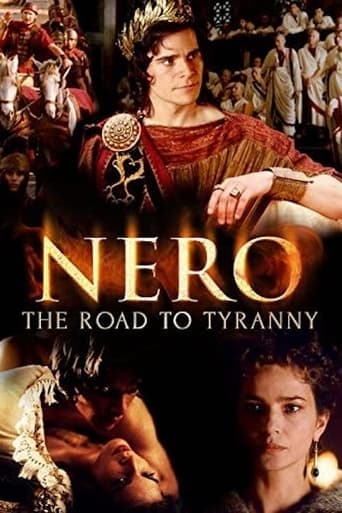





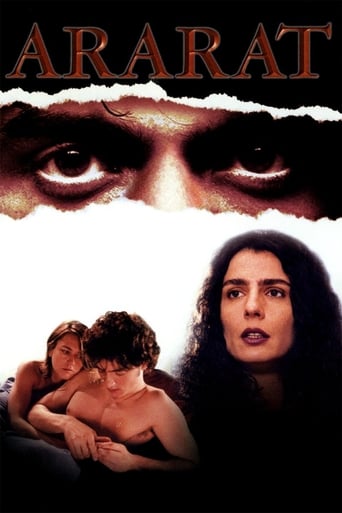
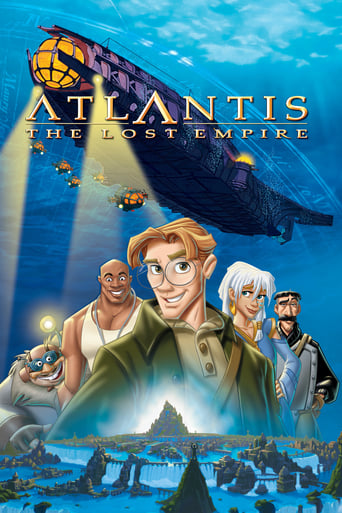
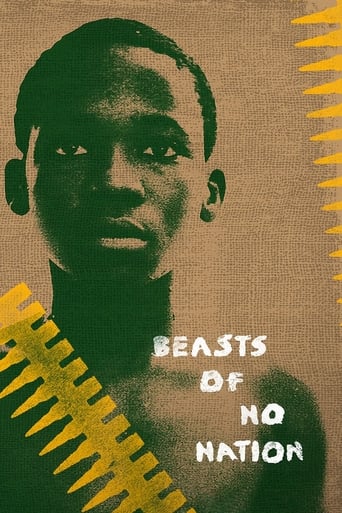




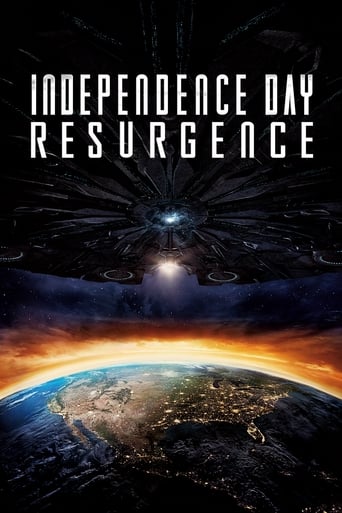



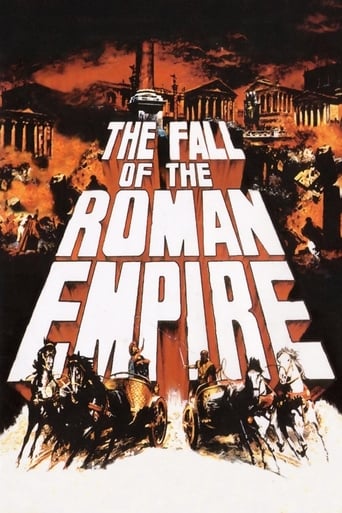


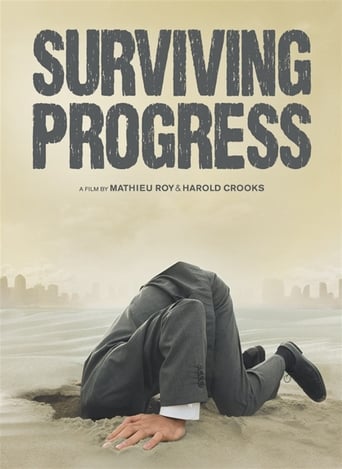

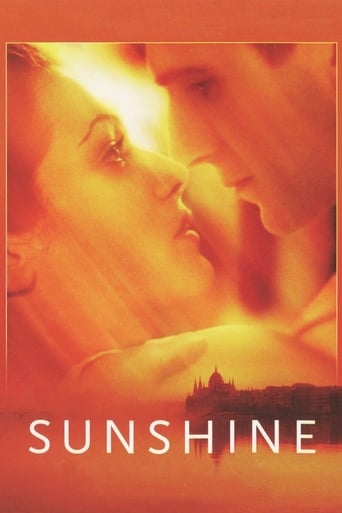

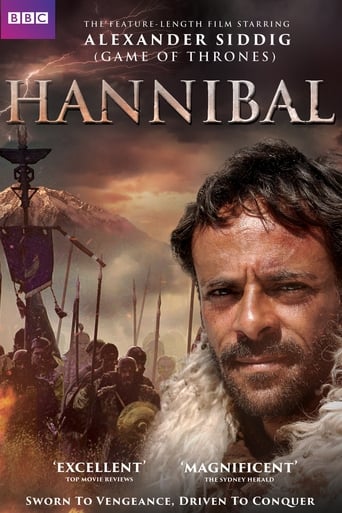










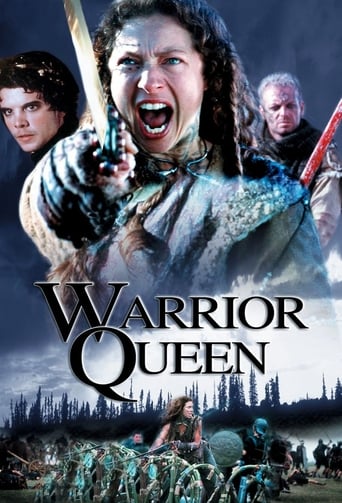




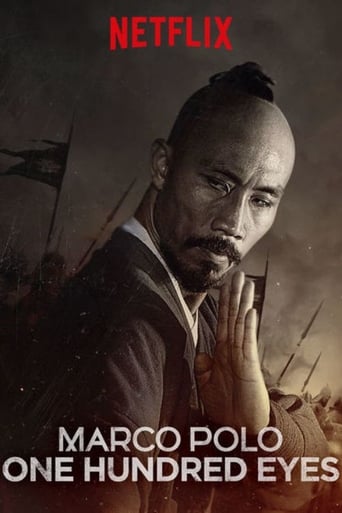

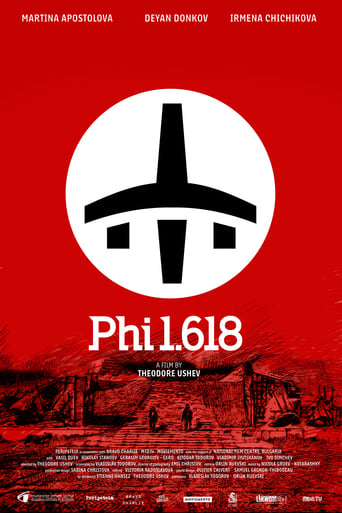





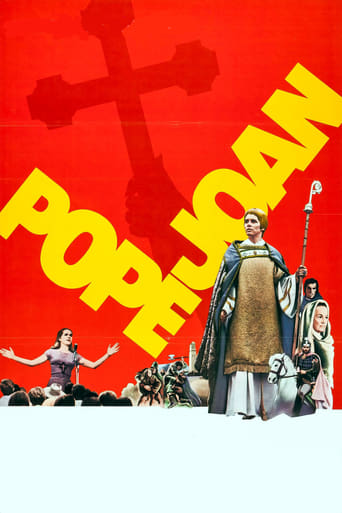








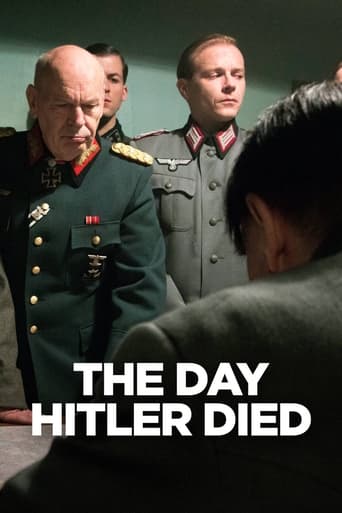






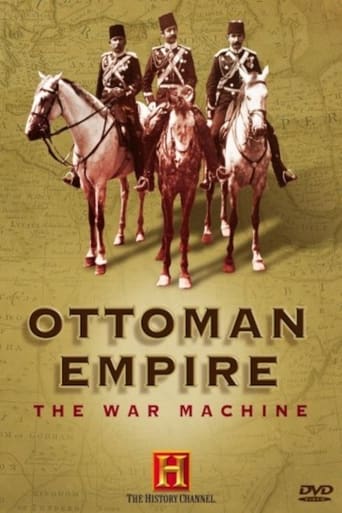
























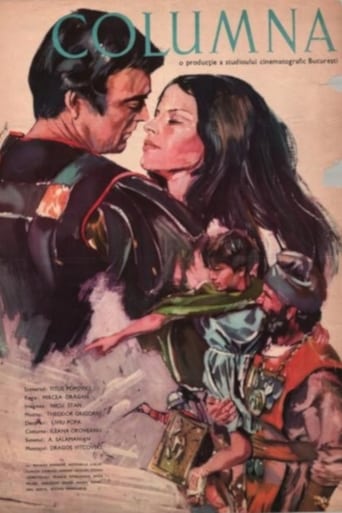







One Night with the King
This amazing biblical drama chronicles the brave and historic legend of Hadassah, a Jewish orphan with exceptional beauty who rises to become Queen Esther of Persia and saves Persian Jews from genocide. By revealing her heritage to the king, Esther thwarts the evil prime minister's plan to annihilate all Jews in the Persian Empire. The annual festival of Purim is inspired by her heroism.